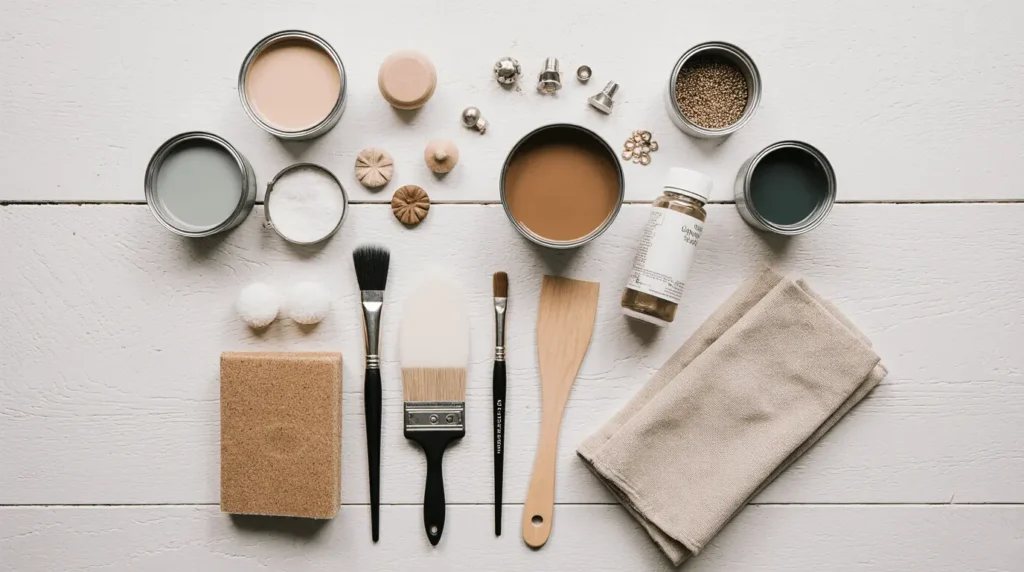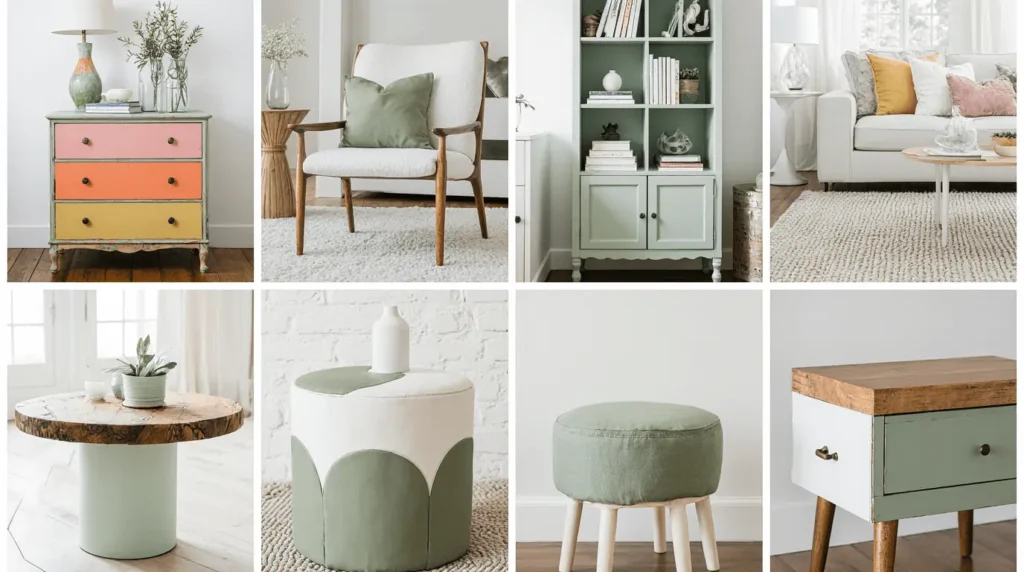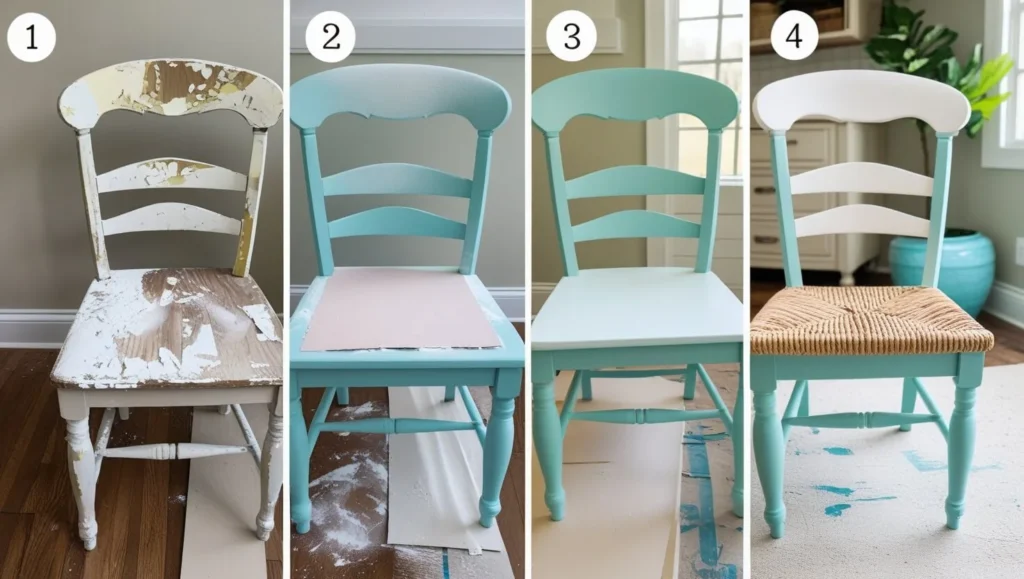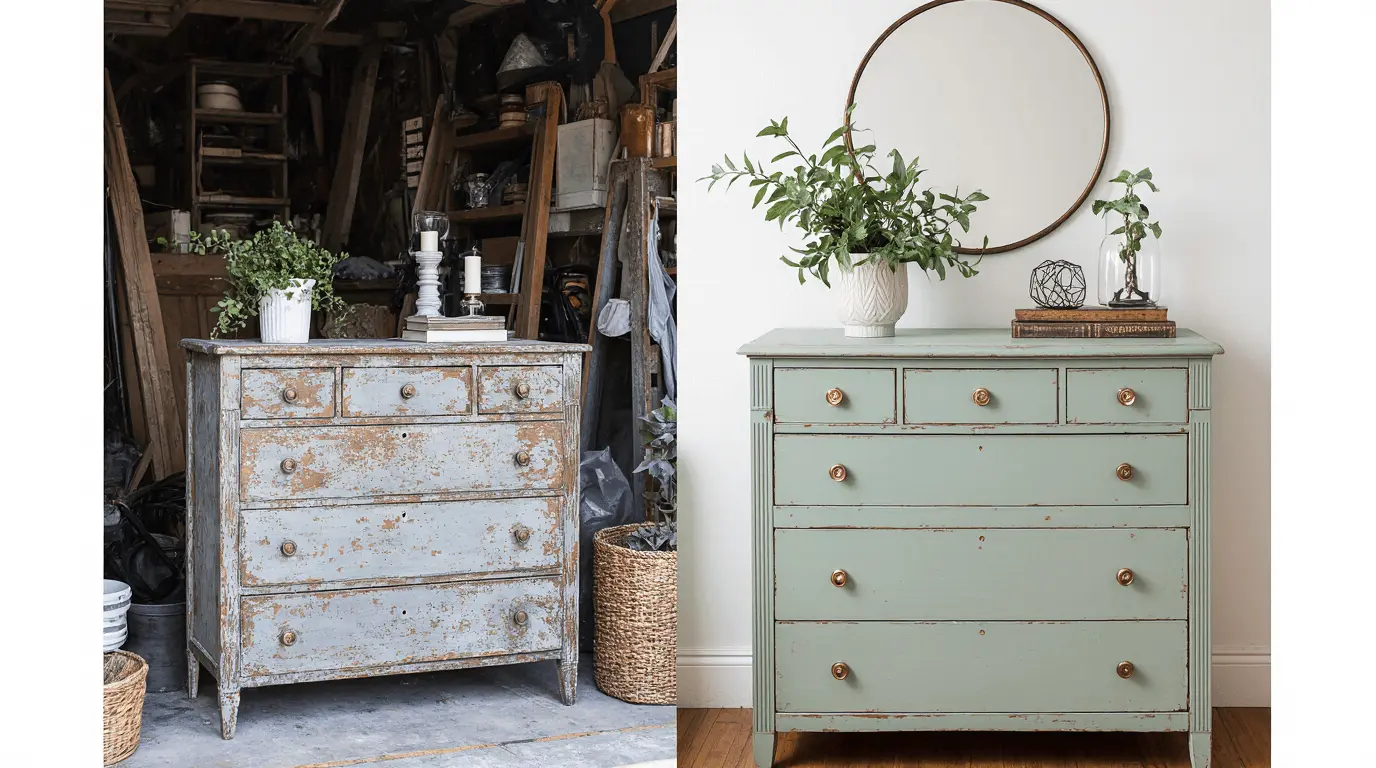Have you ever wondered what upcycled furniture is and why it is becoming one of the most popular means of sustainable home design? Upcycled furniture is an innovative form of interior design that combines creativity, green-friendliness, and huge cost savings. In this comprehensive guide, we will teach you everything you need to learn about upcycled furniture, from its definition and benefits to DIY step-by-step guides that will transform your home.
Upcycled furniture is the process of salvaging old, used, and discarded pieces of furniture and upcycling them to become something newer, functional, and more beautiful than they used to be. As opposed to traditional recycling, which deconstructs objects, upcycled furniture efforts maintain the original structure while refurbishing the aesthetic as well as the functionality through creative remodeling techniques.
Table of Contents
What Is Upcycled Furniture? The Complete Definition
Upcycled furniture refers to the process of renovating, renewing, repainting, or otherwise improving already existing furniture items to give them a new life. The green practice is putting the no-longer-used furniture to work and converting it into something more functional, functional, and aesthetic than before.
This process confronts our throwaway culture values and offers a break from mass-produced consumerism. Previously, upcycling was the norm since older furniture was built to last and therefore perfect for restoration and not replacement.
Upcycled vs. Recycled vs. Refurbished Furniture
Learning the difference between these definitions is significant:
- Upcycling: Reuses existing items with original materials, often ending up being of better quality
- Recycling: Recycled furniture: Breaks down materials to create new product, typically of lower quality
- Refurbishing: Simply repairs and restores to original condition without creative enhancement
Upcycling is always a priority over recycling, as it extends the product life cycle along with adding personality to your own home.
Environmental Benefits of Upcycled Furniture
Carbon Footprint Reduction
Creating upcycled products significantly reduces your carbon footprint by excluding the need for new production. The furniture industry is one of the largest causes of deforestation and greenhouse gas emissions through manufacturing and transportation processes.
Waste Diversion from Landfills
Upcycling helps reallocate approximately 42% of the UK’s 1.6 million tonnes of annual bulky waste away from landfills and incinerators. This whopping waste prevention safeguards our world for future generations.
Resource Conservation
By choosing to upcycle, you’re cutting down the demand for new wood, metal, and fabric products, so less deforestation and less industrial energy needed.
Types of Furniture Upcycling Projects
Most Popular Projects to Remodel
The beauty of furniture upcycling is its versatility. Some of the most popular projects are:
- Dining chairs: Reupholstering and repainting
- Coffee tables: Surface redone and hardware refinishing
- Dressers: Color changes and drawer makeovers
- Cabinets: Door replacement and interior organizational system upgrades
Beginner-Friendly Projects
You don’t need to be a master of sophisticated skills to get started. Wonderful beginner projects are:
- Picture frames and mirrors
- Little ottomans and stools
- Side tables and plant stands
- Wooden candlesticks and decorative boxes
Advanced Transformations
Experienced creators can tackle complex projects such as:
- Built-in bookcases and entertainment centers
- Outdoor patio furniture with weather-resistant finishes
- Murphy beds and space savers
How to Identify Good Candidates for Upcycling
What to Shop for When Hunting for Projects
Successful furniture upcycling starts with choosing the right pieces:
Solid Construction: Real wood rather than particle board Good Bones: Good structural integrity and attractive lines Reasonable Condition: Skip pieces with too much damage or mold
Best Places to Find Pieces to Upcycle
Best hunting grounds for upcycling projects include:
- Charity shops and thrift stores: Good source of solid wood pieces
- Estate sales and garage sales: Typically have good quality vintage furniture
- Facebook Marketplace and Craigslist: Local and at great prices
- Habitat for Humanity ReStores: Mission-driven retail stores
Cost Comparison: Upcycling vs. New Furniture
Upcycling is typically 60-80% less expensive than buying new, making it an affordable choice for frugal homeowners.
Essential Tools and Techniques for Furniture Upcycling

Basic Tool Kit for Projects
Starting your upcycling journey requires minimal investment:
Cleaning Supplies: Sugar soap or TSP cleaner Repair Materials: Wood filler for scratches and holes Sandpaper: Various grits (80, 120, 180) Paint Supplies: Primer, quality brushes, and paint Protective Gear: Masks and gloves for safety
Step-by-Step Upcycling Process
1. Preparation Phase
- Clean thoroughly with sugar soap and allow to dry completely
- Inspect for imperfections and fill with wood filler
- Let repairs dry completely before proceeding
2. Sanding Technique
- Start with 80-grit sandpaper for rough surfaces
- Progress to 120-grit for smoother finish
- Finish with 180-grit to eliminate scratches
- Always sand in direction of wood grain
- Remove all dust with tack cloth
3. Painting Your Project
- Choose quality paints like Fusion Mineral paints (no primer needed)
- Consider Annie Sloan Chalk Paint™ for versatility
- Apply thin, even coats for professional results
- Allow proper drying time between coats
15 Inspiring Furniture Transformation Ideas

Living Room Projects
- Coffee Table Makeover: Transform old wooden tables with chalk paint and new hardware
- Bookshelf Revival: Update particle board shelving with wood contact paper and molding
- Ottoman Creation: Convert old stools into stylish ottomans with foam and fabric
Bedroom Transformations
- Dresser Color Pop: Bright paint and new knobs create stunning focal points
- Headboard Creation: Old doors or shutters make unique headboard statements
- Nightstand Upgrade: Small tables become perfect bedside companions with paint and storage additions
Kitchen & Dining Updates
- Chair Reupholstering: New fabric breathes life into tired dining chairs
- Cabinet Painting: Kitchen cabinets get dramatic makeovers with color and hardware
- Bar Cart Conversion: Old serving carts become trendy bar stations
Outdoor Projects
- Patio Set Refresh: Weather-resistant paint extends furniture life
- Garden Bench Creation: Old chairs become charming garden seating
- Planter Box Transformation: Drawers become unique container gardens
Creative Ideas
- Desk from Doors: Old doors and filing cabinets create custom workspaces
- Storage Ottoman: Coffee tables gain hidden storage compartments
- Kids’ Furniture Fun: Bright colors and whimsical designs create playroom magic
Common Mistakes to Avoid When Upcycling
Preparation Shortcuts
Never skip cleaning and sanding phases – they’re crucial for paint adhesion and professional results in any upcycling project.
Paint and Finish Issues
Using low-quality paints or insufficient coats leads to poor durability in transformed pieces.
Structural Oversights
Address all structural issues before cosmetic improvements to ensure your finished pieces remain safe and functional.
Getting Started: Your First Project

Choosing Your First Piece
Begin with small, simple items like picture frames or wooden trays. These projects build confidence while teaching fundamental upcycling techniques.
Setting Realistic Expectations
Furniture transformation requires patience and practice. Allow yourself time to learn and don’t expect perfection on your first attempt.
Building Your Skills
Consider taking local workshops or joining online communities focused on furniture upcycling to accelerate your learning curve.
Frequently Asked Questions
What is upcycled furniture all about?
It’s the process of transforming old or discarded materials into more practical, functional, and beautiful items through creative restoration techniques like painting, reupholstering, and hardware overhauls.
How costly is it to create upcycled items?
Creating modified furniture typically takes 60-80% less than buying new. A basic dresser makeover might cost $30-50 in supplies compared to $200-400 for a new one.
Is upcycled furniture sturdy?
Yes, the upcycled items are often stronger than much of the mass-produced furniture we have today because they’re typically built on foundations of older, solid wood that was constructed to last decades.
Where do you find furniture to upcycle?
The best sources are thrift shops, garage sales, estate sales, Facebook Marketplace, and Habitat for Humanity ReStores.
How long do projects take?
Simple makeovers are completed over a weekend, but complex overhauls will take weeks, depending on drying time and complexity.
Can I sell my makeover items?
Yes, you can resell your makeover items.
With so many people selling their work successfully online and at market stalls, well-executed pieces command high prices due to their uniqueness and the fact that they’re handmade..
Conclusion: Change Your Home with Eco-Friendly Furniture Solutions
What is upcycled furniture? It’s not just a home furnishings fad – it’s a sustainable lifestyle choice that benefits your wallet and the planet. Armed with an understanding of the processes outlined in this guide, you can create innovative, functional pieces that suit your taste best while contributing to saving our planet.
Whether you’re an absolute beginner or an experienced DIY enthusiast, furniture upcycling is unlimited in its capacity for creative expression and home makeover. Start with basic projects, learn and hone your skills, and before you know it, you’ll be upcycling old gems into valued features in and around your home.
Remember that every piece you upcycle is a victory over careless consumption and a step towards a more sustainable future. Begin your upcycling journey today and get to appreciate the thrill of creating something beautiful, functional, and unique.
Take Action Today
- Subscribe to our Newsletter – Receive expert tips, case studies, and exclusive content on sustainable technology and DIY Eco-Projects

